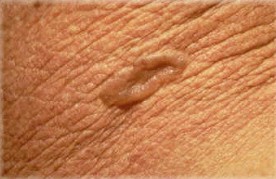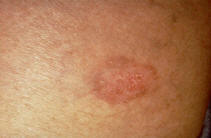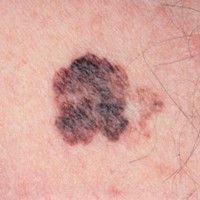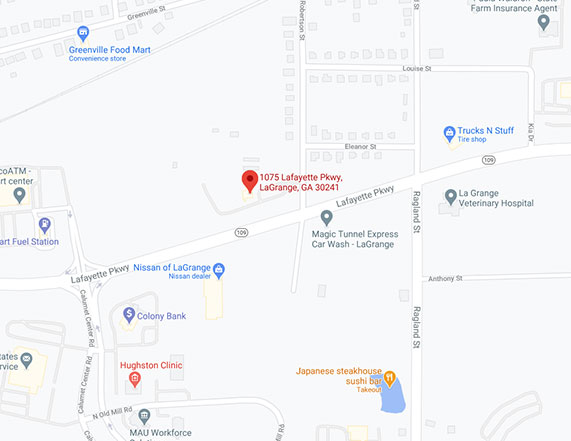Conveniently located to serve Newnan, Peachtree City and LaGrange
Click here to jump to:
Newnan Types of Skin Cancer
It’s important to remain vigilant for developing or changing skin issues to catch potential problems early. Dermatology Institute for Skin Cancer and Cosmetic Surgery provides total body skin exams, Mohs surgery, general and specialized dermatology procedures, and skin cancer prevention and treatment. Explore the different types of skin cancer that can afflict people of various ages.
Basal Cell

Fig. 1 Basal Cell Carcinoma – the most common of the skin cancers, is characterized by a non-healing ulcer or papule with a “rolled border” and prominent blood vessels.
This type of cancer is the most common and the most treatable variety. Experts estimate that about 2.8 million cases of basal cell carcinoma are discovered every year in the U.S. Two factors contribute to the development of this type of cancer: a genetic predisposition and excessive sun exposure. It’s typical for people to have this illness without realizing it, which is why total body skin exams are so important.
Squamous Cell

Fig. 3 Squamous Cell Cancer early stage
Squamous cell cancer is the second most prevalent type of skin cancer. In the United States, about 700,000 people are diagnosed with squamous cell every year. Squamous cell is also curable in many cases. Like basal cell, sun exposure and a genetic predisposition are common factors for this type of cancer. Sometimes squamous cell makes itself known with a lesion that itches or bleeds. Left untreated, the lesion can metastasize under the skin to spread. Patients should watch lesions carefully. Anytime a sore doesn’t heal, see a physician to have it examined.
Malignant Melanoma

Malignant Melanoma
Malignant melanoma is the most deadly type of skin cancer. Although less common, melanoma claims over 9,000 lives per year in the U.S. Every year, over 76,000 new cases of melanoma will be diagnosed in the U.S. UV light exposure is a common cause of melanoma. Atypical moles can increase someone’s risk of developing melanoma. Anyone with a high number of irregular or large moles should have a total body skin exam regularly.
Other Skin Cancers
Kaposi’s sarcoma is a rare cancer that is a result of Human Herpes Virus 8. This type of cancer results in lesions on the legs and feet in brownish-red or blue colors. Actinic Keratosis is a condition that occurs prior to squamous cell carcinoma. With this issue, lesions will develop that are scaly, rough, and red or pink in color.
Understanding types of skin cancer will allow you to monitor your own health proactively. Call us today for more information!


